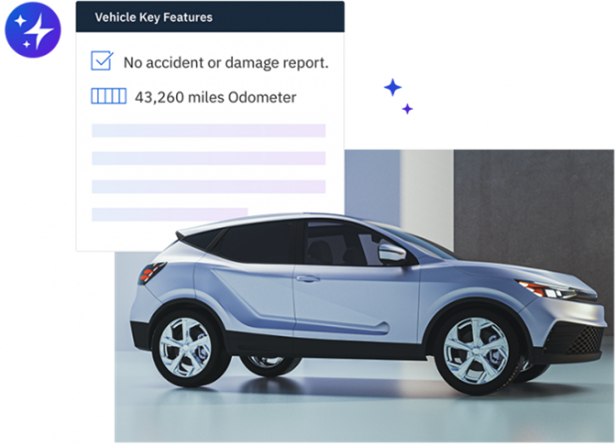Fact Check: 5 Misconceptions in Remote F&I

Article Highlights:
- We surveyed dealers to understand their remote F&I hesitance.
- Dissect their misperceptions and enter reality.
Remote F&I is an important component to digital retailing operations, but dealerships are still hesitant to take the leap in the new digital world. What exactly makes them so timid about this concept?
In the fall of 2021, we surveyed dealers, general managers, and F&I managers about their perspectives and experiences with remote F&I.
The general conclusion was remote F&I is misconstrued by the majority. Five common thoughts stood out above the rest, but we have the facts.
#1: Consumers don’t want remote options.
Fact: In a recent consumer study, the data tells us something different. If available to them, 64.41% of consumers plan to purchase their next vehicle completely online without going to the dealership – and this includes all the inner workings of F&I. The pandemic may have spurred this desire, but this modern age was inevitable. In fact, consumers are even willing to pay more for specific pieces of the sale if offered online:
- Reviewing and selecting F&I products, like GAP and service maintenance: 59.49% are extremely likely
- Signing all paperwork: 58.48% are extremely likely
Amidst the hustle and bustle, consumers say having remote F&I options is simply more convenient. Not to mention, it’s less pressure (whether real or perceived) during the F&I process.
#2: I need wet ink signatures, so remote F&I isn’t possible.
Fact: Wet ink requirements do vary from lender to lender and state to state. However, times are changing. More and more captive lenders are actually encouraging entirely digital transactions by giving preferential treatment to dealers who participate in eContracting.
It’s true, state DMV forms typically have stricter regulations, but many states are beginning to accept electronic signatures on these documents as well. Even if one or two state DMV forms need a wet ink signature, that doesn’t mean the other required forms can’t be signed electronically. With the right tools, you can easily sign, scan, and store copies of your wet ink documents, right alongside your electronically signed documents, for retention.
Keep in mind some lenders and states may also require additional documentation for security purposes. Using technology that details a comprehensive audit trail of every action taken during the signing process can help.
Double check with your lenders and state DMV to see if any signature regulations have been modified since you last reviewed them. If they haven’t, ask if there are plans to adopt electronic signatures in the future – you might be surprised how soon you’ll see growth.
#3: It’s easier to sell products face-to-face.
Fact: Sure, being in an in-person environment helps F&I managers build trust and even gauge body language. But just because you’re not sitting across the desk from one another doesn’t mean you can’t have a traditional selling conversation. In a remote F&I setting, this can still be done. It’s partly coaching and giving your F&I managers the skills to adapt, but it’s also founded on the tools they have. And we’re not talking about selling over the phone. We’re talking about digital interactions that bring your customer’s couch into the F&I office.
Video conferencing technology that works with interactive F&I tools can help F&I managers engage customers, just as they would if the customer were in-person. Screen-sharing, interactivity – it’s the same tools you know and use today in-store, but expanding them outside the dealership’s four walls for remote reach, to maximize engagement and profitability.
#4: My F&I managers have more control during the in-person environment.
Fact: With interactive technology, F&I managers can easily hand the reins to customers – and then take them back – whenever necessary. If the customer is spending more time than usual reviewing F&I packages, F&I managers simply step in, become actively present, and answer questions, engaging in the same manner they would for in-person interactions today.
Hand-offs for signing documents is also possible. The intuitive signing ceremony guides off-site buyers through the process, so no signatures are missed. For added security and transparency, two-factor authentication ensures you’re sending documents to the right person, and F&I managers can track progress in the DMS to make sure documents are signed timely. With technology built with the dealership in mind, navigating the remote F&I process is no different than the in-store process.
#5: Remote F&I is an added inconvenience.
Fact: In the study we conducted, respondents were concerned about extra expenses, too many challenges, and not having the staff to get it done.
These are reasonable first thoughts, but dealers should also consider what inconveniences are present in their process today. Let’s use an out-of-state buyer as an example.
The cheapest option for printing and overnighting the needed forms is through the United States Postal Service, which averages a minimum of $26. It doesn’t stop there because you also need to configure the additional costs for overnighting this package back to you. Factor in the time spent putting this forms package together (including the dreaded post-it note signature tags for every document), the fear of missing a form – or even worse, actually missing a form and having to go through the overnight process all over again – and missing the opportunity to sell add-on products.
How does that sound for inconvenient?
If customers can be anywhere, convenience is the only thing they know. For the customer, this should be business as usual, no exceptions.
For you, this means having the ability to “retail anywhere”. You have to meet customers wherever they are. Good news is, it’s not a different set of tools based on the buying scenario. It’s taking your in-store processes and making them available online, which is only possible with one complete system built on consistency and known for protecting profitability.
Final Thoughts
As acceptance for remote F&I continues to grow in our digital world, talk between your departments (especially your internet sales department) to identify your customer’s needs, and then take a look at your options for providing them with some form flexibility. The facts show more and more customers prefer doing more pieces of the transaction remotely. Maybe that trend hasn’t reached your market yet, but maybe with the right flexible tools, your market could get a little bit bigger.
Related Articles:

The Future of Variable Ops with Experts at NADA 2025
Explore how AI is transforming variable operations in automotive retailing with insights from NADA 2025. Learn about efficiency, profitability, and fraud prevention from industry leaders.

Decision made regarding the Vehicle Shopping Rule – now what?
Check out five key takeaways from the Vehicle Shopping Rule to keep your dealership safe from FTC enforcement actions.

3 Ways AI Can Elevate Your Dealership’s Online Inventory
On average, Americans are exposed to between 4,000 and 10,000 advertisements every day. From commercials on TV to billboards on your way to work, all…

The Pizza Playbook – What Ordering Pizza Teaches Us About F&I
For as long as I can remember, my family had “pizza night” every week. Without fail, every Friday evening we’d all gather around the computer…















